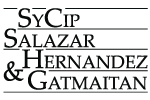The International Comparative Legal Guide to: Telecoms, Media and Internet Laws and Regulations 2013
a) The telecommunications sector is a mature fixed line and mobile phone market characterised by universal access and a relatively robust infrastructure. According to the World Bank’s 2012 Information and Communications for Development report, 99% of the population was covered by mobile-cellular networks in 2010. Based on reports from the Business Processing Association of the Philippines, the Philippines became a top business process outsourcing destination partly because of a stable telecommunications infrastructure. The Philippine Long Distance Telephone Company (“PLDT”) with affiliates Smart Communications, Inc., Digitel Mobile Philippines, Inc., and Digital Telecommunications Philippines, Inc., and competitor Globe Telecom, Inc., have the widest networks and market shares. Liberalised in the early to mid-1990s, the legal regime is pro-competition and pro-access in tenor. Only partial foreign ownership of telecommunications enterprises is allowed by the Philippine Constitution.
(b) The audio-visual media distribution sector refers to broadcast over radio, TV and cable networks. They are the primary sources of public information and entertainment for most residents. ABS-CBN Broadcasting Corporation, GMA Network, Inc., Manila Broadcasting Company, Sky Cable, Inc. and Global Destiny Cable, Inc. lead the field. These traditional media enterprises are free to compete but are wholly reserved to Philippine nationals.
(c) The internet infrastructure sector of mostly internet access providers reflects the...
Read the rest of the publication by downloading the PDF from the SyCipLaw website.


 Post a comment
Post a comment Print article
Print article

